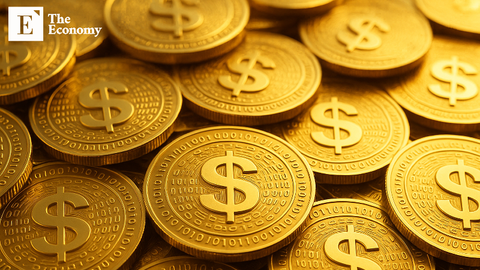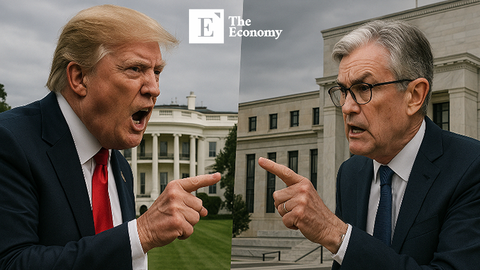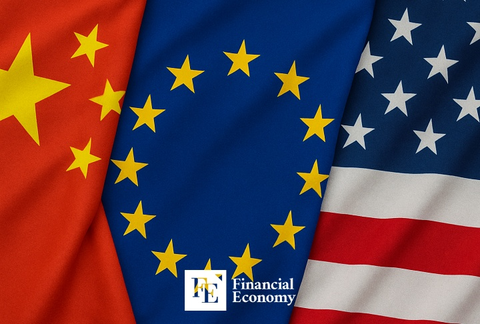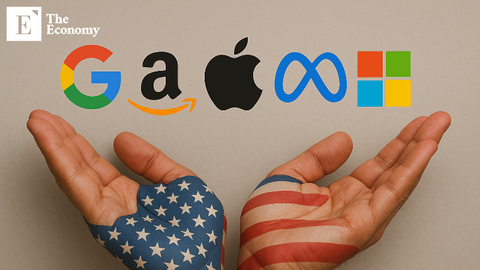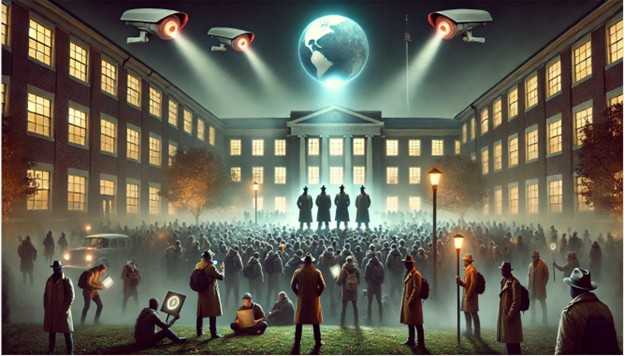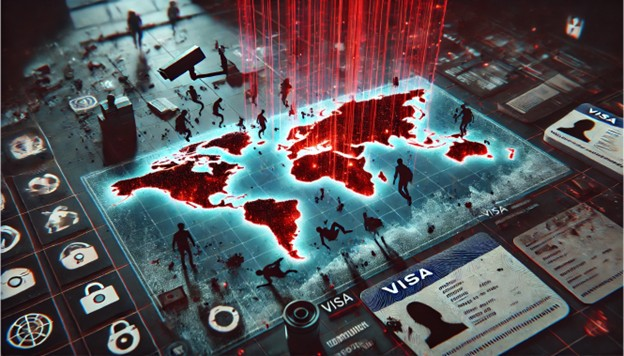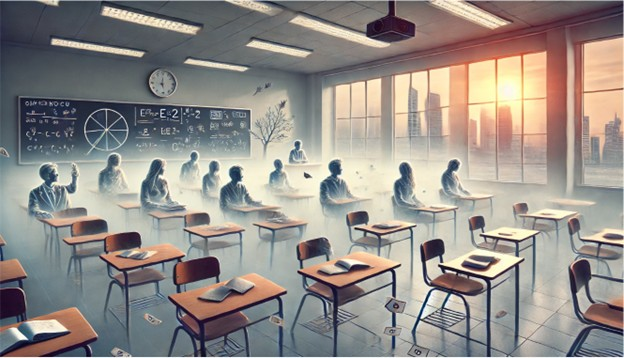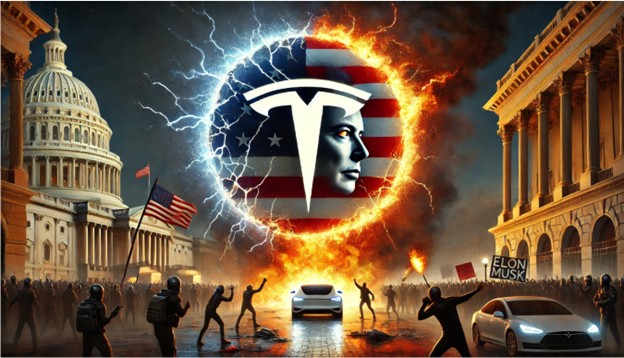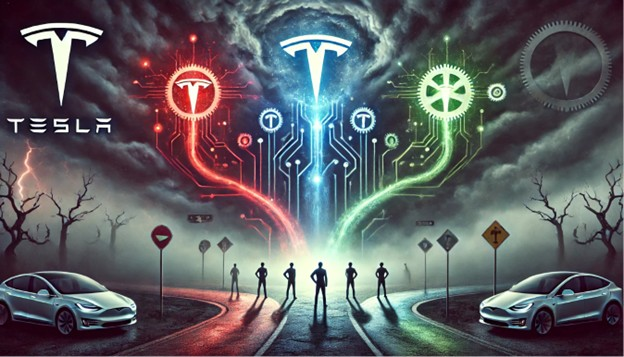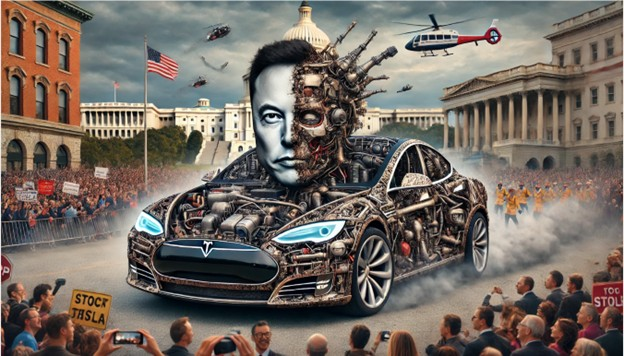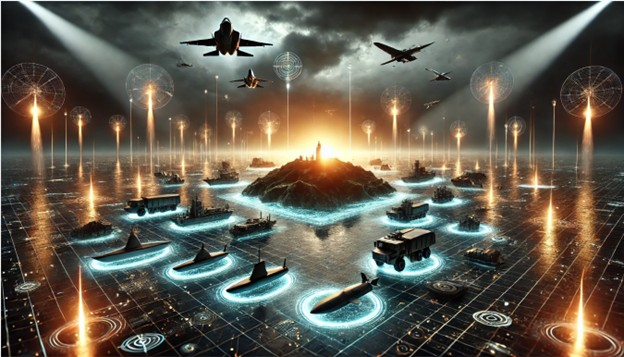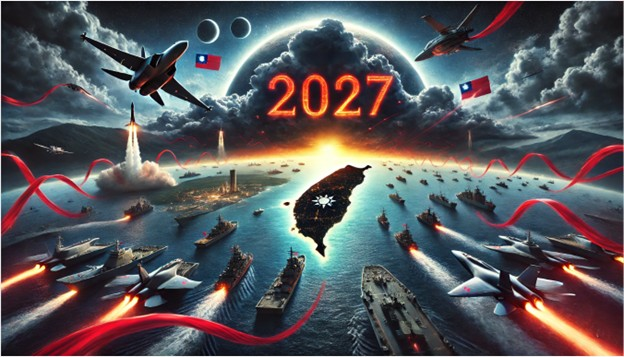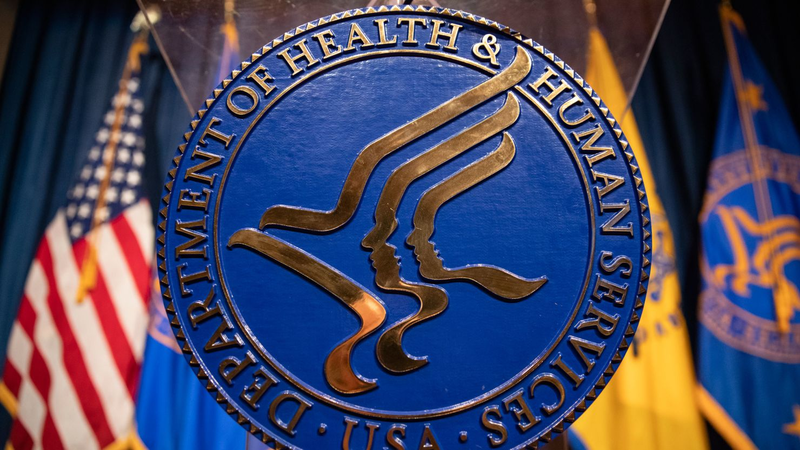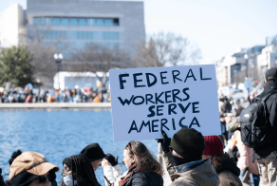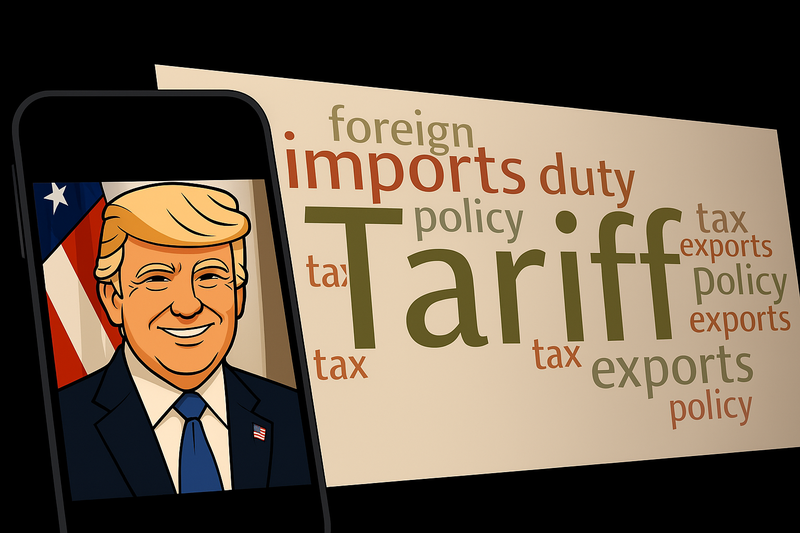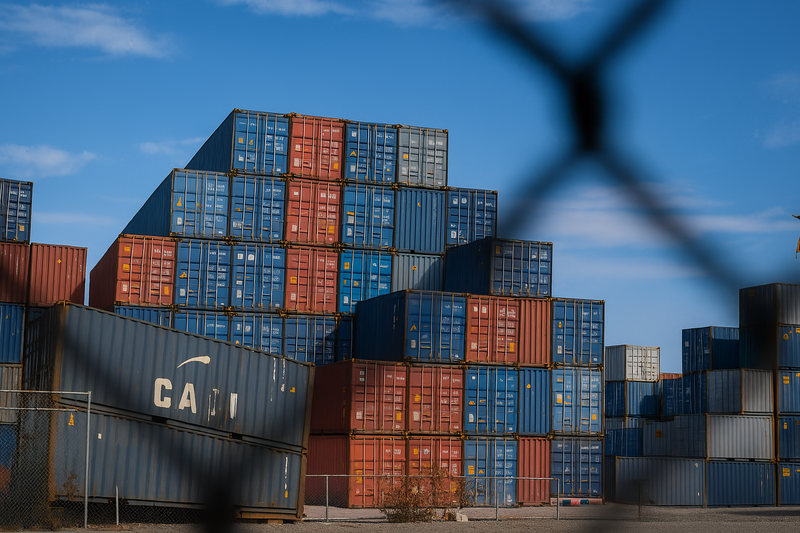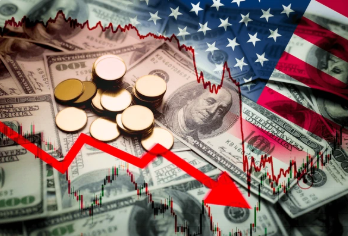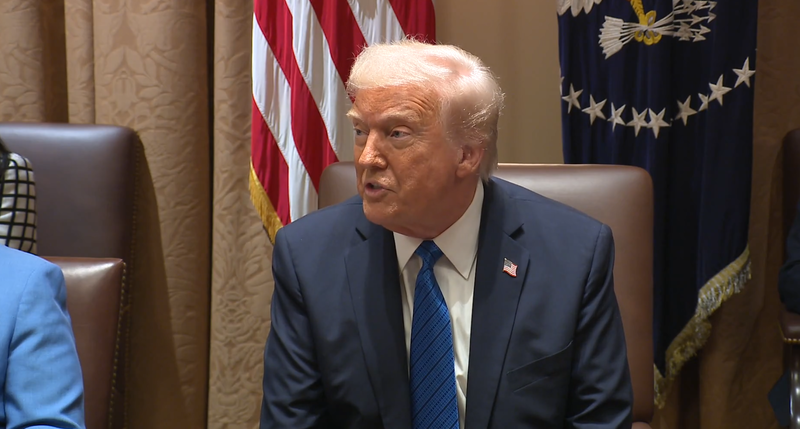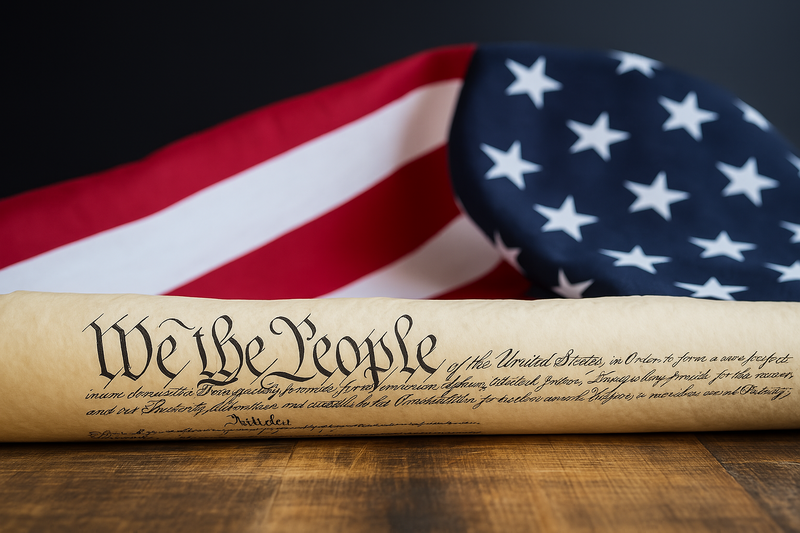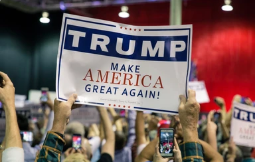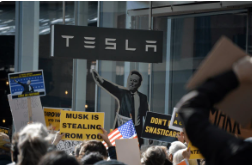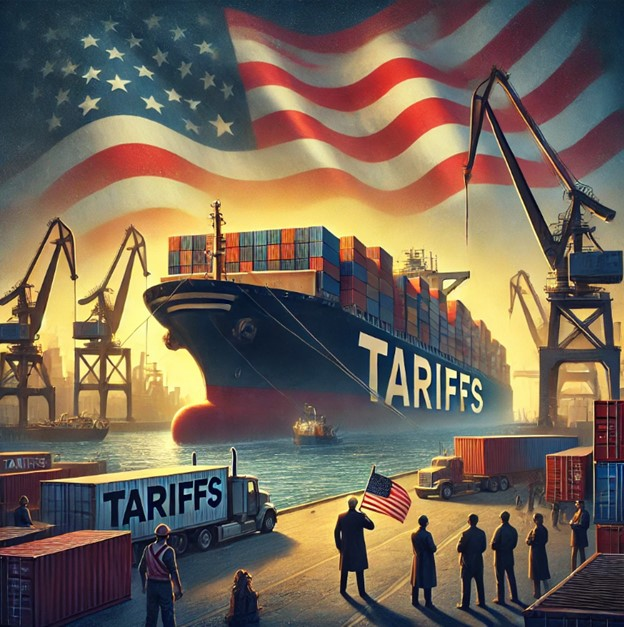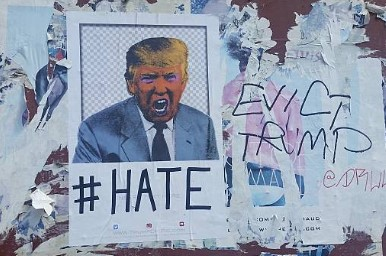Tariff Turbulence: The Renewed U.S.-China Trade War and Global Repercussions
Input
Changed
China Responds: Retaliation and Resilience Global Markets and Political Reverberations Toward an Uncertain Future
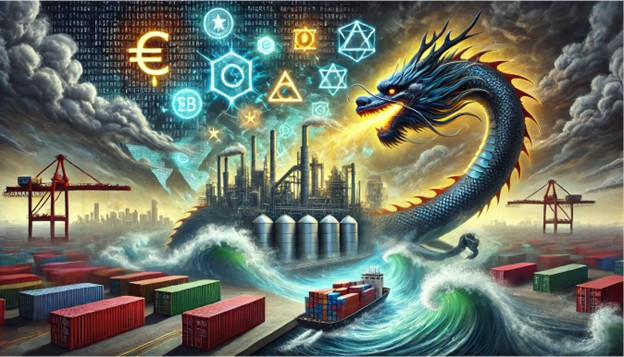
China Responds: Retaliation and Resilience
The morning of April 1, 2025, brought with it more than spring air for global markets—it delivered a thunderclap of policy from Washington. President Donald Trump, now deep into his second term, reignited tensions with China by announcing a new wave of sweeping tariffs. At the center of the announcement was a 34% tariff on Chinese imports, encompassing nearly all goods shipped to the United States. This baseline tariff of 10% would take effect on April 5, while steeper “reciprocal” tariffs would roll out by April 9.
But that wasn’t all. Trump signed an executive order targeting the “de minimis” loophole, a trade rule that had allowed Chinese and Hong Kong-based low-value packages—those under $800—to enter the United States duty-free. With this executive move, the administration effectively slammed the brakes on a major pipeline of inexpensive goods entering American homes and businesses.
For Trump, the message was clear: the U.S. would no longer tolerate what he labeled “predatory” economic behavior from Beijing. For analysts, the implications were more sobering. Chad Bown, a senior fellow at the Peterson Institute for International Economics, estimated that the average tariff on Chinese goods would skyrocket to an unprecedented 76%. Such a move, he warned, risked not only inflaming tensions but also disrupting fragile supply chains still recovering from the pandemic era.
Predictably, markets trembled. Retailers braced for higher costs. Consumers faced the likelihood of increased prices on everything from electronics to apparel. And around the world, policymakers and investors began questioning whether a new trade war was at hand—one potentially more volatile than the first.
The reaction from China was swift and unequivocal. Through its Ministry of Commerce, Beijing issued a strongly worded statement denouncing the tariffs as a violation of the international trade order. Officials argued that the United States, far from being a victim, had reaped vast benefits from decades of globalization—benefits they now sought to obscure behind walls of protectionism. China made it clear: it would not sit idly by. Retaliation was coming.
China’s response carried a tone of both strategic calculation and resolute defiance. By April 3, the Ministry of Commerce had issued multiple statements condemning the U.S. actions. According to Beijing, these new tariffs disregarded the mutual benefits established through years of multilateral negotiation and violated basic norms of international trade.
But Beijing didn’t just stop at verbal condemnation. Drawing from its earlier playbook, officials hinted at the reactivation of various economic levers that could be used in retaliation. While they stopped short of immediately announcing counter-tariffs, Chinese leaders left no doubt that they were willing to respond proportionately. They signaled that options were on the table—from restricting exports of rare earth metals to curbing operations of U.S. tech firms in China. Each of these possibilities carried the potential to hurt critical sectors of the American economy.
China had shown this playbook before. Just two years earlier, it had moved decisively against South Korea and Japan in a separate geopolitical skirmish. In January 2023, after both countries imposed COVID-19 testing requirements on Chinese travelers, China responded by suspending short-term visas for South Koreans and Japanese nationals. The tit-for-tat approach wasn’t merely symbolic—it disrupted tourism and business travel during a sensitive phase of post-pandemic recovery.
Yet China’s messaging remained carefully balanced. While signaling strength, officials also emphasized China’s resilience and economic recovery. As borders reopened and domestic consumption slowly rebounded, Beijing appeared determined to frame itself as a responsible player facing an unpredictable adversary. In a strategic pivot, Chinese state media highlighted signs of economic revival—such as a reported peak in COVID-19 infections in major regions and a strengthening yuan—as evidence of the country’s stability despite mounting pressure.
Still, there were limits to the optimism. The escalating trade conflict cast a long shadow over Chinese industries, many of which rely on access to the U.S. market. Manufacturers, exporters, and logistics companies all faced renewed uncertainty. But Beijing’s stance was resolute: China would endure, and if necessary, fight back.
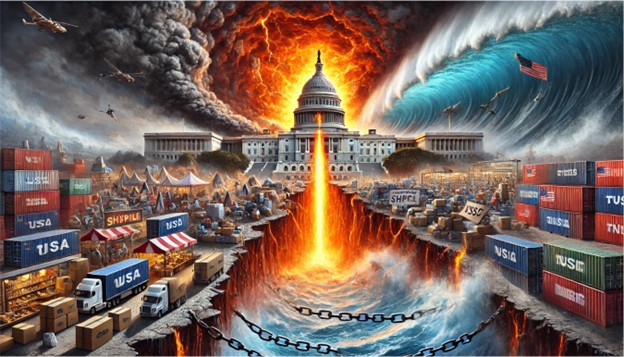
Global Markets and Political Reverberations
The consequences of the renewed trade conflict weren’t confined to the U.S. and China. Around the world, governments, businesses, and financial institutions began recalibrating their expectations for 2025 and beyond. Investors closely watched fluctuations in the Chinese yuan, which surged to a five-month high—a signal of confidence in China's potential countermeasures or possibly a bet on its economic adaptability.
Meanwhile, in Washington, business lobbies and consumer watchdog groups expressed concern over the broader economic fallout. The prospect of higher prices loomed large for American consumers already grappling with inflation. Retailers warned of disruptions just ahead of peak seasons for electronics, clothing, and home goods—many of which are still heavily sourced from China.
Other economies also watched warily. The European Union offered no official comment, but trade analysts suggested that Brussels might eventually be drawn into the fray, either as a mediator or an affected party. Countries like Vietnam, India, and Mexico, increasingly seen as alternatives to Chinese manufacturing, found themselves both cautiously optimistic and deeply concerned. On one hand, they stood to benefit from companies seeking to relocate supply chains. On the other, the broader instability posed serious risks to the global trade system.
The U.S.-China tariff conflict also rekindled old questions about globalization and economic nationalism. Trump’s approach—marked by tariff walls and executive orders—signaled a clear retreat from the multilateral trade framework that had governed international commerce for decades. Whether this new model could deliver long-term economic security remained to be seen, but its short-term disruptions were already evident.
For China’s neighbors, including South Korea and Japan, the renewed conflict served as a stark reminder of Beijing’s willingness to retaliate against even small policy slights. The 2023 visa suspensions over COVID-19 testing protocols had demonstrated how quickly economic diplomacy could turn punitive. In this context, U.S. firms operating in China—especially in sectors like tech, automotive, and consumer goods—now faced a new layer of political risk.
Multinational companies found themselves caught in the middle. Decisions about sourcing, investment, and product strategy increasingly required geopolitical calculus. Would sourcing from China expose them to tariffs? Would American brands suffer backlash from Chinese consumers? These were no longer theoretical concerns—they were immediate strategic questions.
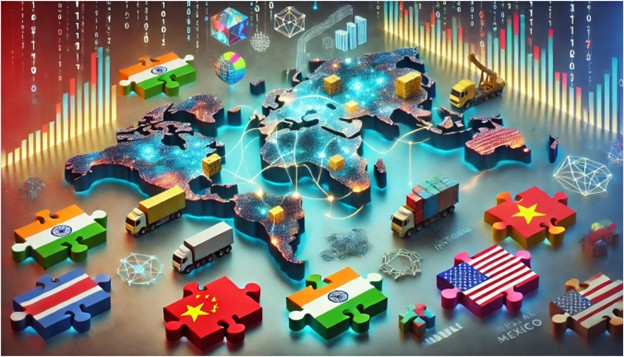
Toward an Uncertain Future
As April 2025 unfolded, the outlines of a familiar but more dangerous trade confrontation came into view. The Trump administration’s tariffs were not just economic measures; they were a political signal. China’s response, though calculated, carried the weight of national pride and the memory of past humiliations. In this renewed clash between the world’s two largest economies, there were no easy off-ramps—only the hope that mutual pain might once again drive compromise.
The global economy, already weathered by pandemic disruptions and geopolitical instability, now stood at another inflection point. What began as a policy announcement in Washington had rippled into a worldwide reckoning over trade, power, and the uncertain road ahead.
In boardrooms, on factory floors, and across supply chains that span continents, the question resounded: was this the start of a new era of economic cold war—or just another chapter in the unfinished story of U.S.-China rivalry?
Either way, the world was watching.

